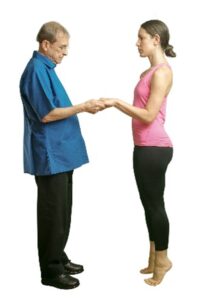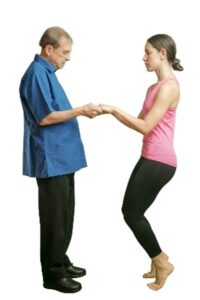How Can a Massage Therapist Help My Calf Pain?
August 22, 2025

If you’ve been experiencing calf pain that doesn’t go away, you most likely have an injury, like a muscle or tendon strain. Maybe you hurt yourself while running, playing a racquet sport, or soccer. The pain might be bearable or it might be debilitating, but either way, you want it treated so that you can live pain-free. A massage therapist can help. You might be wondering, “How can a massage therapist help my calf pain?”
What is the Anatomy of the Calf?
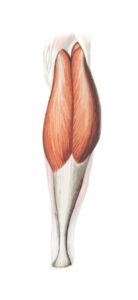

First off, the calf has two primary muscles. The one you see, and gives the calf its shape, is the superficial muscle called the gastrocnemius. The one you don’t see, and might not be familiar with, is the deep muscle, called the soleus, which is responsible for most of the calf’s strength.
The calf is the power behind walking, running, and jumping. The superficial muscle works primarily when your knee is straight, like standing on your toes to reach something higher on a shelf. And the deep muscle works when your knees are bent, like when you run.
Both of those calf muscles are connected to the largest tendon in your body, the Achilles tendon. This tendon attaches the two calf muscles to your heel bone, at the back of your foot, and is often overlooked when thinking about injury to the calf region.
“Why Does My Calf Hurt When I Walk?”
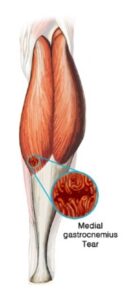
Pain in the calf region can be caused by one of four major problems:
- Injury to the superficial muscle
- Injury to the deep muscle
- Injury to the Achilles tendon
- Cramping
If you overexert yourself, you might injure the superficial or the deep calf muscle. When you injure the superficial one, it sometimes feels like someone came behind you and hit you with a whip. The pain is intense and momentary, with continuing pain. When you injure the deep one, it usually comes on slowly.
Afterward, if the superficial injury is severe, it’s hard to walk and put your heel down without severe pain. If the injury is mild, it is just painful to walk rise up on your toes to reach something.
If you strain the upper part of the Achilles tendon, the pain is in the lower part of the calf.
Pain in the calf means the fibers of the muscles or tendon are damaged. These are usually very small microtears that heal either well or poorly. If the fibers heal well, only a little scar tissue forms, between the ends of the fibers that have been separated. When the healing is poor, adhesive scar tissue develops in a random fashion, which makes it weak and vulnerable to retearing every time you exert yourself. This adhesive scar tissue is what causes most chronic pain.
As for cramping, it often occurs in the evening and is quite different from a muscle injury. The cramping occurs for a short time and then disappears. Cramping can be caused by many different things, but the most common are a lack of strength or a lack of electrolytes.
How Can a Massage Therapist Figure Out the Source of Calf Pain?
When you visit your massage therapist, they will do a couple of assessment tests to figure out where the source of your calf pain is.
For the first test, they will have you rise onto the balls of your feet with your knees straight. If this test is painful, it’s likely the superficial calf muscle that is strained.
For the second test, they will have you rise onto the balls of your feet with your knees bent. If this test is painful, it’s likely the deeper calf muscle that is strained.
But if both tests hurt, and the pain is lower down where the calf becomes flat, the injury is likely in the upper part of the Achilles tendon.
How Do You Get Rid of Calf Pain?
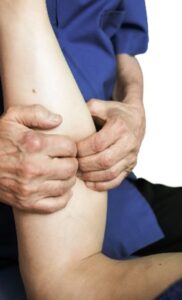
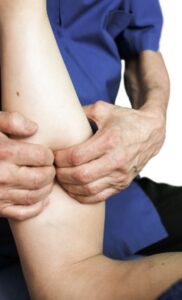
There are a few ways to treat and eliminate calf pain, depending on what the injury is, where your injury is, and how severe the pain is. Some treatments you can do on your own, and some will need to be done by a professional.
If your calf pain is very mild and seems to be in the superficial calf, wear a shoe with a one or 2-inch heel all the time. This treatment usually works to allow the calf to heal. If your superficial calf muscle pain is severe or lasts for more than a week or so, see a professional for treatment.
If the pain is in the deeper part of the calf or the upper Achilles tendon and it lasts more than a week, get professional treatment as soon as possible to avoid it becoming a chronic issue.
When you see a massage therapist, their treatment will work to eliminate the adhesive scar tissue. Friction therapy is one good option that’s usually performed a few times a week, along with some therapeutic exercises. These rehabilitative exercises strengthen the muscles and reverse the atrophy that occurs while the injury is present. When performing friction therapy, the massage therapist moves across the adhesive scar tissue at a 90° angle to separate the injured fibers and encourage normal healing. The timeline for these treatment sessions depends on the severity of your injury, but typically occurs over the course of a few months.
If your pain is coming from cramping in the calf, do these strengthening exercises daily. If you are very strong and that’s not the issue, try high-quality electrolytes without any sugar. Good-quality electrolytes will help hydrate your body and prevent cramping.
How Do I Find a Massage Therapist Who Can Eliminate Adhesive Scar Tissue?
Massage isn’t only for relaxation. Massage therapists specializing in chronic pain can treat injuries at their source. You just have to find the right one. Try searching for “orthopedic manual therapy,” “friction therapy,” or “chronic pain.” Don’t be afraid to call or email a business to ask if they offer this type of treatment.
If you’re in the Boston, MA area, I have been treating chronic pain for decades and am also available by appointment. If you’re not in the Boston area, I can still help by conducting a remote evaluation session, where I walk you through a series of assessment tests. You’ll need either your current massage therapist or someone I can direct to perform the assessment tests. You can also email me or call my office to see if this is a good fit for you or ask any questions you might have beforehand.
If any therapist is unable to treat the injury, for any number of reasons, a good therapist will refer you out to another professional who can.
If you are experiencing calf pain and live in the Boston area, schedule an appointment or a complimentary 10-15 minute phone consultation.
Schedule an Appointment or Call →
Ben E. Benjamin holds a Ph.D. in Sports Medicine and was the founder and President of the Muscular Therapy Institute in Cambridge, Massachusetts. He is the author of dozens of articles on working with injuries and chronic pain as well as the widely used books in the field, Are You Tense? Exercise Without Injury and Listen To Your Pain: The Active Person’s Guide to Understanding, Identifying and Treating Pain and Injury. Dr. Benjamin has been in private practice for over 50 years and teaches therapists throughout the country.
Can a Massage Therapist Help My Calf Pain? FAQs:
- What is the anatomy of the calf?
The calf has two muscles and a tendon: a superficial muscle that makes up the calf’s shape, the gastrocnemius; a deep muscle you don’t see, the soleus; and the largest tendon in your body, the Achilles tendon.
- Why does my calf hurt when I walk?
Pain in this region is most likely caused by injury to the gastrocnemius, the soleus, or the Achilles tendon. It might also be cramping, which is most commonly caused by weakness or a lack of electrolytes.
- How can a massage therapist figure out the source of calf pain?
When you visit a massage therapist skilled in injury assessment and treatment, they will perform assessment tests to evaluate your movements. These precise tests will tell them where the source of your pain is coming from.
- How do you get rid of calf pain?
If you have very mild calf pain, you can try consistently wearing a shoe with a 1- to 2-inch heel, which can sometimes work. When you see a massage therapist, they will eliminate adhesive scar tissue with friction therapy, likely over the course of a few months. If you have cramps, strengthening exercises or electrolytes typically help.
- How do I find a massage therapist who can eliminate adhesive scar tissue?
Try searching for a massage therapist who specializes in “orthopedic manual therapy,” “friction therapy,” or “chronic pain.” You can also see me for an in-person appointment in the Boston, MA area or for a remote evaluation.
Related Posts
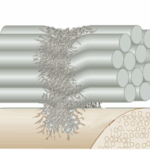
Why Does My Old Injury Still Hurt?
Question: What is the common denominator of chronic pain?
Answer: ADHESIVE SCAR TISSUE
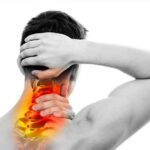
Can Massage Help Pain that Travels? Cambridge MA
Question: Why does an injury to the neck cause pain that travels to the arm and hand? Answer: Referred Pain Pain that travels in your body is called Referred Pain. This phenomenon means the injury is in one place, and the pain is in another. Understanding this phenomenon helps you better understand your body’s responses […]

Can Massage Therapy Help Lower Back Pain Cambridge, MA?
Lower back pain is experienced by at least 50 million people each year in the United States alone. My own severe back pain when I was a teenager is what led me into this field. Back pain is often a debilitating, terrible experience. But it can also be annoying and limiting. I’ve treated hundreds of […]

Massage Therapy for Chronic Neck Pain Near Cambridge, MA
Question: What’s the most common cause of chronic neck pain? Answer: Ligament sprains The Causes of Pain in Your Neck For many reasons, your neck can be painful, but most people are unaware of the most common cause of chronic neck pain. Sprained or severely injured muscles can cause pain in the neck, but muscles […]
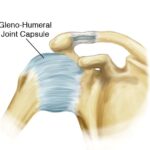
Can a Massage Therapist Fix a Frozen Shoulder in Cambridge, MA
Question: Does a frozen shoulder always go away with time? Answer: Often no. The Causes of Frozen Shoulder A frozen shoulder can be incredibly painful. The pain originates in the shoulder joint. A joint is formed where any two bones meet. It’s the enclosed space between your upper arm bone, the humerus, which is […]

